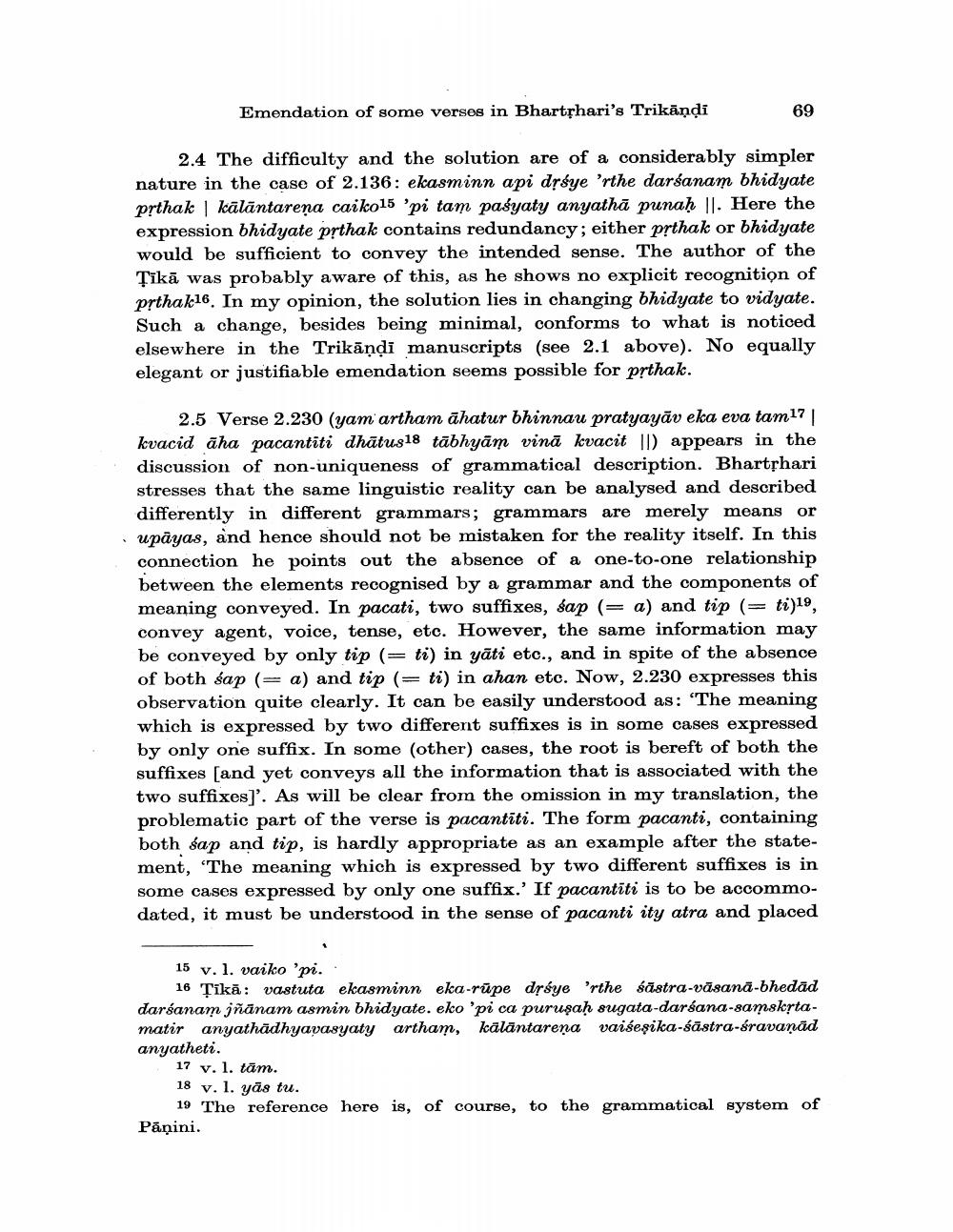Book Title: Emendation Of Some Verses In Bhrtharis Trikandi Author(s): Ashok Aklujkar Publisher: Ashok Aklujkar View full book textPage 7
________________ Emendation of some verses in Bhartphari's Trikāņdi 69 2.4 The difficulty and the solution are of a considerably simpler nature in the case of 2.136: ekasminn api drøye 'rthe darśanam bhidyate prthak kālāntareņa caiko15 'pi tam paśyaty anyathā punaḥ ll. Here the expression bhidyate prthak contains redundancy; either prthak or bhidyate would be sufficient to convey the intended sense. The author of the Tīkā was probably aware of this, as he shows no explicit recognition of pệthak16. In my opinion, the solution lies in changing bhidyate to vidyate. Such a change, besides being minimal, conforms to what is noticed elsewhere in the Trikāņdi manuscripts (see 2.1 above). No equally elegant or justifiable emendation seems possible for prthak. 2.5 Verse 2.230 (yam' artham āhatur bhinnau pratyayāv eka eva tam 17 | kvacid āha pacantiti dhātus18 tābhyām vinā kvacit It appears in the discussion of non-uniqueness of grammatical description. Bhartshari stresses that the same linguistic reality can be analysed and described differently in different grammars; grammars are merely means or upāyas, and hence should not be mistaken for the reality itself. In this connection he points out the absence of a one-to-one relationship between the elements recognised by a grammar and the components of meaning conveyed. In pacati, two suffixes, sap (= a) and tip (= ti)19, convey agent, voice, tense, etc. However, the same information may be conveyed by only tip (= ti) in yāti etc., and in spite of the absence of both śap (= a) and tip (= ti) in ahan etc. Now, 2.230 expresses this observation quite clearly. It can be easily understood as: "The meaning which is expressed by two different suffixes is in some cases expressed by only one suffix. In some (other) cases, the root is bereft of both the suffixes (and yet conveys all the information that is associated with the two suffixes)'. As will be clear from the omission in my translation, the problematic part of the verse is pacantiti. The form pacanti, containing both śap and tip, is hardly appropriate as an example after the statement, 'The meaning which is expressed by two different suffixes is in some cases expressed by only one suffix.' If pacantiti is to be accommodated, it must be understood in the sense of pacanti ity atra and placed 15 v. I. vaiko 'pi. 16 Țikā: vastuta ekasminn eka-rūpe dréye 'rthe śāstra-vāsanā-bhedad darśanam jñānam asmin bhidyate. eko 'pi ca puruṣaḥ sugata-darsana-samskrtamatir anyathädhyavasyaty artham, kālāntarena vaiseşika-sästra-śravanad anyatheti. 17 v. 1. tām. 18 v. l. yās tu. 19 The reference here is, of course, to the grammatical system of Pāņini.Page Navigation
1 ... 5 6 7 8 9 10 11 12
